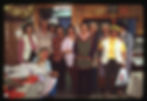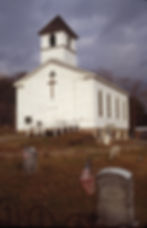The tied quilt tradition
- The Folklife Center at Crandall Public Library
- Jan 29, 2021
- 4 min read
Thirty-five years ago I began my first consultant job as a folklorist in upstate New York.
Crandall Library wanted to expand their budding Folk Arts Program and agreed with the folks at the New York State Council on the Arts that a young folklorist working and studying in Washington, DC, could breathe new life into their program.
I was to conduct a Folk Arts Survey of Warren County, New York. The emphasis was on finding “folk arts” and those “folk artists” that could be a part of a festival or workshop series. My job was to inspire the folks at Crandall with the wealth of folk art in their own backyard and the possibilities of future programming.
Warren County is where the Hudson River rises into the Adirondack foothills. A place of hardscrabble farms, logging and wood lots, hunting and fishing, and 150 years worth of tourism. My journey that summer became more ethnographic in approach, searching for those activities, splashes of creativity, and their practitioners that helped define the region. It was about letting the region and its people speak for themselves, and taking the time to listen.

That summer, I first encountered the tied quilts of the Johnsburg United Methodist Women (UMW). Not overly structured in design, these tied quilts were made of lots of little scrap pieces of material, somehow coming together into a colorful whole. This fun-loving group of women raised money with church suppers and craft sales at locally affordable prices, proudly pointing out the “Ladies Aid Society” stained glass window, symbolizing generations of hard work in support of their small country church.
For the next several years, Johnsburg UMW worked closely with Crandall Library’s Folk Art Project. We co-hosted an annual quilt and needlework show to document local textiles, and they provided a sampler tied quilt for our growing archive of folk culture. They also helped us experiment with ways to present local traditions to a general audience by participating in festivals, children’s workshops, and other activities.
I remember being questioned by colleagues about the use of the label “tied quilt” rather than “comforter” and even about the validity of calling these quilts “folk art,” given the use of sewing machines rather than handwork.
I learned to rely on the wisdom of these women, who patiently told me, “Of course we all use sewing machines to make tied quilts - it makes the work go quicker.” One proudly showed me her Singer sewing machine, the same machine her grandmother used to make quilts at the end of the 19th century.
Looking back to that summer 35 years ago, I was the one to be inspired. I learned not to be limited by my own preconceived constructs, but to listen and to learn from the folk themselves.

Here’s the program text describing my take on the Tied Quilt Tradition, that I wrote for An Adirondack Quilt Show: A Celebration of the Tied Tradition, held at the Wevertown Community Hall, Saturday, August 13, 1988, 10 am to 4 pm. Rain or Shine:
Tied quilts have a long history in the Adirondack North Country. For generations, they have been used as bedcovers at home and in the lumber camp, placed in hope chests by prospective brides, given to neighbors in need, and sold to raise money for the local church.
Quilts are commonly three layers: the backing, batting, and top. The backing is often simple, not given much attention, since it is the underside of the quilt. The batting is the interlining, once only made of cotton or wool (though sometimes an old blanket was used). Bats are now also made of synthetic fibers, and said by some to make quilt care easier. The top is the decorative side of the quilt. Pieces of material sown together into blocks, these blocks then used to form the overall design.
Tying and quilting are two different ways to fasten the three layers of a quilt. North Country families often practiced both techniques, but relied on tying for the enormous task of making their own bedcovers. In the tying process, spaced threads are passed through the layers of the quilt and tied into knots. Tying is quicker than quilting and allows a thicker batting to be used for a warmer cover.

A tradition of “waste not, want not” has influenced the choice of materials used in tied quilts. Scraps are commonly salvaged from family sewing projects. Other materials have included leftover scraps from making shirttails at a local factory, cloth grain bags that came in an assortment of prints and patterns, and even unworn portions of wool jackets and pants. New material, when used, is often bought on sale or donated.
Such scraps are preferred by many of the area’s longtime tied quilters. They like the effect of combining materials of many different colors and patterns, and say that the more little pieces you have, the better the variety, and the faster the top comes together.
Many area women learned to make tied quilts from older relatives. Pauline Waddell, who has tied quilts all her life, recalls the skill at home:
“I started in while I was a teenager or maybe a little bit younger, working on these quilts at night with my mother. We pieced them by hand. I guess that would be seen as kind of tame to teenagers now, spending your evening, piecing quilts. But I did. Long winter evenings. That’s the way we spent our time.”

Other have learned within quilting groups. Some of the most common in this area are the United Methodist Women organizations. Located in Johnsburg, North Creek, North River, Wevertown, and Porter Corners, these groups help to support their churches while keeping alive the tradition of tied quilts.
These quilts have been used and enjoyed, not tucked away. Tops made a generation or more ago are given backing and batting, and are tied by the new generation. In some, colors are faded and materials are worn from constant use. Sometimes patches are added where the material has worn clear through. These are quilts used and loved by the present owners, to be passed on with pride to the new.
A version of this article was first published in Voices: The Journal of New York Folklore, Fall-Winter 2016, Volume 42: 3-4 and is used by permission.
